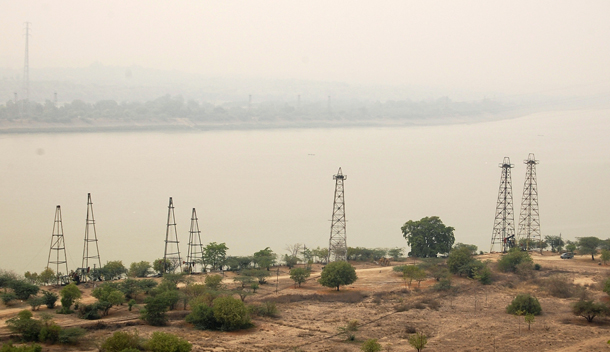RANGOON — Foreign direct investment in Burma grew sharply during the 2014-2015 fiscal year and reached a record US$8 billion, a more than doubling of FDI compared to the year before, according to the Myanmar Investment Commission, which said the oil and gas sector was the main driver of growth.
“We expected $4 or 5 billion, but at the end of the fiscal year the figures have risen to a record of $8 billion. The FDI numbers are becoming higher than what we’ve expected in recent years,” said Aung Naing Oo, director-general of the Directorate of Investment and Company Administration (DICA) and a member of the Myanmar Investment Commission (MIC). “The oil and gas sector is at the top of the table.”
DICA figures released this week indicate the oil and gas sector attracted $3.2 billion in FDI, the transport and telecommunication sector saw investments rise to $1.6 billion, closely followed by manufacturing with $1.5 billion. Real estate and hotels and tourism were the fourth and fifth sectors receiving most FDI, with $780 million and $357 million, respectively.
In the 2013-2014 fiscal year, which ends on March 31, Burma attracted about $3.5 billion in FDI, half of which flowed into its labor-intensive manufacturing sector.
Singapore-listed companies comprised more than half of the investment volume in 2014-2015 with a combined total of $4.2 billion, reflecting an apparent trend of managing local projects remotely from the investment haven, particularly for oil and gas projects. Hong Kong-based firms were the second-largest investors with $850 million, followed by China-registered companies with $516 million, according to DICA.
Many US-listed firms looking to invest in Burma are reportedly resorting to opening offices in Singapore in order to avoid potential risks involved in doing business with US-blacklisted “crony” businessmen who had ties to the former military regime.
“Many of biggest foreign companies opened a company based in Singapore, that’s why its investment became top of the list. They are not only from Singapore, but also from various countries all over the world,” said Aung Naing Oo. He said the MIC is forecasting a total FDI inflow of around $6 billion next year, adding, “We expect that next year will also be good.”
The Asian Development Bank said in a report last month that Burma’s economic growth is expected to stay strong at around 8.3 percent in the next fiscal year “propelled by investments stimulated by the ongoing reforms, an improved business environment, and the country’s integration into Southeast Asia.”
“Risks to Myanmar’s economic outlook come from thin external and fiscal buffers, ethnic and sectarian tensions, extreme weather events, and a possible slowing of reform momentum ahead of elections [in November 2015],” the bank said.
President Thein Sein’s nominally civilian government took office in 2011 and began opening up the economy in an attempt to attract FDI after international trade sanctions were lifted in 2012.
Oil and gas exploration licenses and exploitation licenses for the country’s underdeveloped telecoms sector have been among the most coveted foreign investment opportunities in the long-isolated country.
Telenor of Norway and Qatar-based Ooredoo were granted operating licenses and started rolling out their networks in January 2014. In March last year, 13 foreign and local firms were granted offshore oil and gas exploration licenses and the companies have since been negotiating their individual production-sharing contracts with the state Myanma Oil & Gas Enterprise.
Burma’s manufacturing sector has attracted investment by foreign firms looking to produce cheap products made with low-skill labor, such as garments, for export sales.
Hnin Oo, senior vice president of Myanmar Fisheries Federation and a fish produce exporter, welcomed the strong FDI figures, saying these were an indicator that investment in Burma’s rich natural resources sector would continue regardless of the outbreak of conflict or political uncertainty.
He said, however, that Burma needs investment that adds value and creates jobs, adding that it should attract investment in its manufacturing sector. “As long as manufacturing and production sector won’t come bigger, the country’s economy will not become developed … We can’t be dependent on the resources sector for a long time,” Hnin Oo said.

















